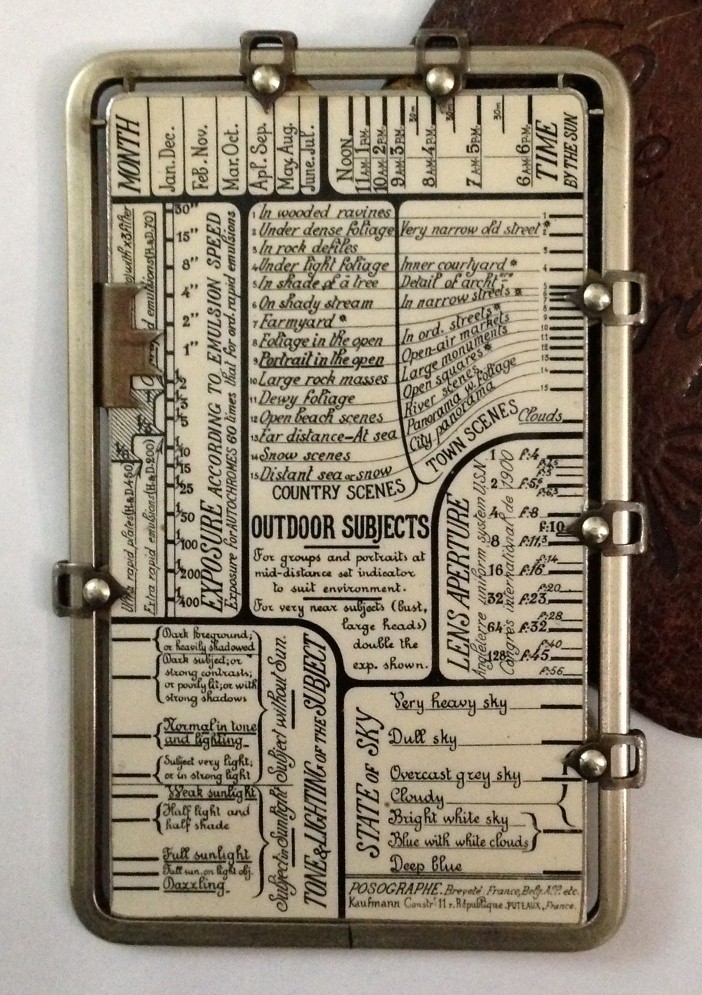Photography
Related: About this forumAnd for my photography friends, I present..... the Posographe!
Designed in the 1920s to assist with camera settings.

And here is a short (3min) video showing how it works.
CaliforniaPeggy
(152,083 posts)I have never seen anything like it. Someone was very clever in making this. Seems as though it would take some time to set up properly.
Thank you for sharing this, my dear Nittersing!
![]()
Nittersing
(6,849 posts)I've never seen anything like it before either!
2naSalit
(92,683 posts)What a cool device.
![]()
Biophilic
(4,738 posts)People really are amazing.
Silent Type
(6,663 posts)Nittersing
(6,849 posts)ornotna
(11,070 posts)Silent Type
(6,663 posts)usonian
(13,789 posts)Program's author:
https://www.animatedsoftware.com/elearning/KaufmannPosographe/index.html
This animation was originally created based on an article in the Oughtred Society's bi-annual journal, Spring 2019 issue Kaufmann Posographe (pdf), and then the lead programmer purchased an antique Posographe in order to make more accurate measurements and higher resolution photographs, to check the placement of some hidden connections, and lastly, to test the accuracy of the model against an actual Posographe. It's very close!
Kaufmann invented and patented several versions of the Posographe and a couple of other related mechanical contraptions. The mathematical theory behind how the Posographe works was conceived around the same time, and Kaufmann apparently had a number of correspondences with the mathematician who invented the theory. Although the theory is not explained here, the math behind the Posographe is illustrated with connecting lines, colored brass plates (or not, if you prefer!), circles indicating intersecting positions of the pieces, and various additional ways of exploring "under the hood."
From the paper (recommended)
Mechanism:

Schematic:

Facebook page (no login required)
https://www.facebook.com/posographe.kaufmann
Think. Again.
(17,955 posts)rsdsharp
(10,118 posts)erronis
(16,827 posts)Around 1996 I took some co-workers from overseas to roam through the rooms of the old original Smithsonian Castle. We admired the craftsmanship of the devices that were displayed. Such fine details on the brass and glass and woodworks. We all said something to the effect of "They just don't make things like that anymore."
Then we wandered over to the Air and Space Museum. On display were models of the first moon rover - built out of plastics and foil and seemingly light-grade metal. And we realized that they do make things like that - just different and for the purpose.
Warpy
(113,130 posts)back in the days of B&W film and going out for a day of random shooting because anything over or under exposed could be handled at the enlarger.
That's an interesting artifact, though. It would have come in very handy for people using commercial processing.
Bernardo de La Paz
(50,899 posts)Bernardo de La Paz
(50,899 posts)I noticed that the output moved little for some inputs and a lot for other inputs. So the ratios and leverage would have taken quite some time to get right because the inputs are all interconnected.
Could perhaps be calculated, but it is a 5 variable input problem. Some are reciprocals or followers. The scale on the front can be adjusted too (during development).
Thank you for bringing this to us!